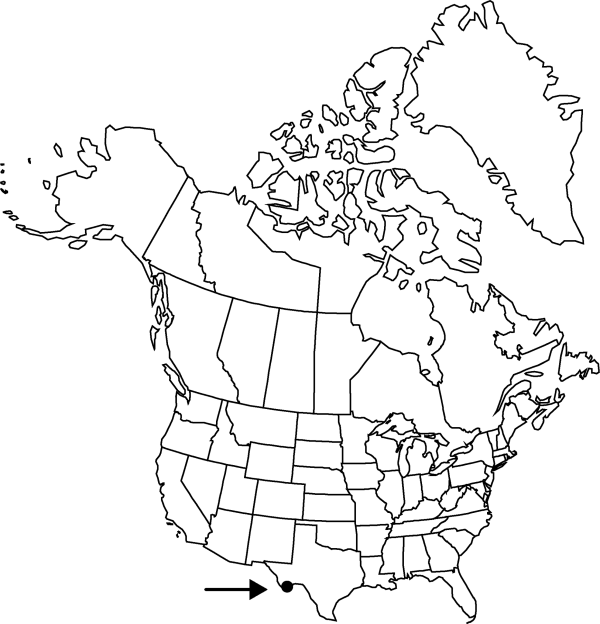Coryphantha chaffeyi
Bull. S. Calif. Acad. Sci. 30: 58. 1931.
Plants usually unbranched (often 2–3 branches in Chisos Moun-tains, Texas), spines obscuring stems. Roots diffuse (rarely short taproots). Stems spheric, becoming short cylindric in age, (3–)5–10.5(–16.6) × (2–)3–4.5(–6) cm; tubercles (4–)7–8(–12) × 3–5(–7) mm, moderately soft; areolar glands absent; parenchyma not mucilaginous; medullary vascular system absent. Spines (35–)40–55(–81) per areole, white, tips yellowish or reddish; radial spines 22–40+ per areole, 5–9 mm; central spines 8–10 per areole, spreading, straight, longest spines (4–)7–15 × 0.2–0.3(–0.40) mm. Flowers nearly apical, 12 × 6.5–13(–16) mm, sterile distal part of flower tube 0–2 mm, shorter than stamen-bearing part; outer tepals fringed (or entire); inner tepals pinkish to creamy white, with prominent, broad, pinkish salmon to light brown midstripes, 4.5–7(–9) mm; outer filaments pink; anthers yellow; stigma lobes green, ca. 1 mm. Fruits bright red, obovoid to clavate, (7–)13–24 × 3–6 mm, not very succulent; floral remnant strongly persistent. Seeds black, somewhat comma-shaped, 1–1.2 mm, pitted. 2n = 22.
Phenology: Flowering (Mar-)Apr–Jun; fruiting Jun–Aug(-Sep), 1-3 months after flowering.
Habitat: Oak-juniper-pine woodlands, mountainsides, among rocks in grassy areas, crevices, open slopes, limestone and igneous substrates
Elevation: 1500-2500 m
Distribution

Tex., Mexico (Coahuila, Durango, San Luis Potosí, Zacatecas).
Discussion
Coryphantha chaffeyi is nearly identical to C. dasyacantha and might yet prove to be conspecific. Coryphantha chaffeyi is distinguished only by the following characteristics: (1) flowers averaging smaller in all parts, as seen from living material; (2) spines whiter; (3) spines usually more numerous; and (4) populations confined to higher altitudes. Some populations (e.g., on limestone in the Del Norte Mountains and the Dead Horse Mountains, Texas) may be intermediate. However, in Chisos Mountains the two species seem to be sharply defined morphologically and widely separated ecologically.
Selected References
None.